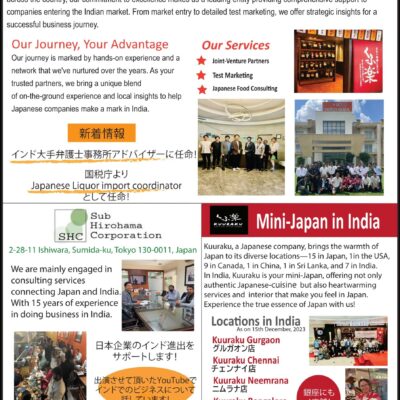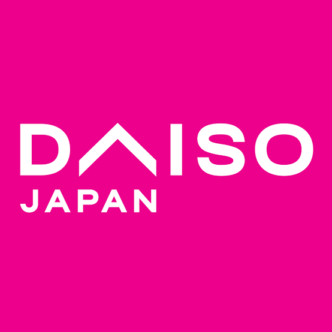Japan’s vibrant economy and unique business landscape make it an exciting place to launch a small business in Japan. Whether you’re a salaried worker dreaming of a side hustle or ready to dive into full-time entrepreneurship, understanding the essentials of starting a sole proprietorship or company is key. As a bilingual IT professional with over 23 years of experience in Japan, I’ve compiled this guide based on insights from business owners, public resources, and my own research. Here’s what you need to know to kickstart your entrepreneurial journey in Japan.
Disclaimer: I am not a tax, investment, or real estate advisor. Consult a professional for tailored advice. This article is for informational purposes only and simplifies concepts for clarity.
Why Start a Small Business in Japan?
Japan offers a structured yet accessible process for starting a business, especially for sole proprietorships. With minimal startup costs and the potential for tax benefits, launching a small business can be a low-risk way to test your entrepreneurial ideas. Whether you’re freelancing, contracting, or setting up a sole proprietorship, you can begin from home and scale up as your business grows. For those eyeing a corporate structure, Japan’s streamlined processes and support systems like the Tokyo One-Stop Business Establishment Center (TOSBEC) make it easier than ever.
Choosing Your Business Type
As a salaried worker, you have five common paths to start a business in Japan:
- Side Hustle (副業, Fukugyō): Perfect for testing ideas while keeping your day job.
- Contractor (業務委託, Gyōmu Itaku): Work on specific projects with flexibility.
- Freelance (フリーランス): Offer services independently, ideal for creatives and consultants.
- Sole Proprietor (個人事業主, Kojin Jigyōnushi): Run a small business with minimal setup.
- Company (法人化, Hōjinka): Establish a formal entity like a Limited Liability Company (LLC) or stock company.
The first three options are great for dipping your toes into entrepreneurship, while sole proprietorships and companies suit those ready to commit.
Sole Proprietor vs. Company: A Quick Comparison
| Aspect | Sole Proprietor | Company |
| Starting Cost | Zero | Minimum ¥200,000 |
| Running Cost | Low, can operate from home | Rent, employees, legal fees |
| Time to Set Up | 1 day | Weeks to months |
| Documentation | 1-page form (開業届, Kaigyō Todoke) | Extensive (incorporation, seals, capital) |
Sole Proprietorship: Start with a single form, the 個人事業の開業・廃業等届出書 (Kaigyō Todoke), submitted to your local tax office. Tools like Freee simplify the process, though forms are primarily in Japanese.
Company: Requires notarized Articles of Incorporation, company seals, and a minimum capital deposit (e.g., ¥5 million for a Business Manager Visa). Expect legal fees and more complex registration.
Also Read: Operation Sindoor: India’s Brave Soldiers Make History!
Key Documentation
For sole proprietors, submitting the Kaigyō Todoke is the first step. To maximize tax benefits, pair it with the 青色申告承認申請書 (Blue Return Approval Application) for:
- Tax Deduction: Up to ¥650,000 annually.
- Loss Carryover: Offset losses for up to 3 years.
- Expense Flexibility: Deduct salaries, utilities, and a portion of rent if working from home.
Use e-Tax for digital filing, but maintain strict bookkeeping to enjoy these benefits. For companies, consult resources like SME Japan or TOSBEC for guidance on incorporation and visa requirements.
Taxes and Insurance
Sole Proprietor Taxes:
- Income Tax: 5%–45%, based on income.
- Resident Tax: 10%.
- Enterprise Tax: 3%–5% if income exceeds ¥2.9 million annually.
- Consumption Tax: Exempt for the first two years; applies from year three if income exceeds ¥10 million (or earlier with the Invoice System).
Company Taxes:
- Corporate Tax: 15%–23.2%.
- Additional Taxes: Complex, including corporate resident and business taxes (see Tokyo Metropolitan Tax website).
Insurance:
- National Pension: ¥16,980/month, with discounts for upfront payment.
- Health Insurance: ~15% of prior year’s income, reducible via exemptions or lower-premium providers like Kokuhokumiai.
Payment Schedule:
- Income & Consumption Tax: February 16–March 31.
- Resident Tax: June, August, October, January.
- Enterprise Tax: August, November.
- Advance Income Tax: July, November (if estimated tax exceeds ¥150,000).
Advantages of a Small Business
- Tax Deductions: Enroll in 小規模企業共済 (Shokibo Kyosai) for flexible retirement savings (¥1,000–¥70,000/month, fully deductible).
- Expense Flexibility: Deduct rent, utilities, and salaries (including to yourself).
- Low Pension Premiums: Opt for National Pension over pricier corporate plans.
- Safety Net: Join schemes to protect against partner bankruptcy.
Disadvantages
- Additional Taxes: Enterprise and consumption taxes can add up.
- Retirement Benefits: Smaller unless supplemented by Shokibo Kyosai or iDeCo.
- Health Insurance Costs: High premiums, though reducible with strategic planning.
Balancing a Day Job and Business
Many small business owners in Japan maintain a day job. Combine all income (salary, business, real estate) for your Kakuteishinkoku (final tax return), filed February 16–March 15 via e-Tax or at your tax office. Maximize expenses by paying yourself a salary from the business (e.g., a ¥5 million business with ¥1 million expenses can expense ¥4 million as salary).
When to Quit Your Day Job?
Deciding to go full-time depends on:
- Income Stability: Consistent revenue from your business.
- Tax Merits: Benefits like Blue Return outweigh salaried deductions.
- Low Costs: Minimal overhead, especially for sole proprietors.
- Demand: Steady need for your product/service.
- Lifestyle: Desire for flexibility and new opportunities.
Running a business solo is challenging but opens doors a day job can’t.
Resources
- Japanese Resources:
- Book: Chapter 3, 定年後ずっと困らないお金の話 by Daiki Yorifuji.
- YouTube: 個人事業主チャンネル (Kojin Jigyōnushi Channel), サンデーマネーチャンネル (Sunday Money Channel).
- English Support: TOSBEC offers consultations and English forms for company registration and insurance (https://www.startup-support.metro.tokyo.lg.jp/onestop/en/).
Topics to Explore
Deepen your knowledge to save taxes and protect your business:
- Shokibo Kyosai: Retirement savings with loan options.
- Consumption Tax: Understand exemptions and the Invoice System.
- Safety Net: Bankruptcy protection schemes.
- Blue Return System: Maximize deductions with disciplined bookkeeping.
FAQs
Q: Can I start a sole proprietorship without quitting my job?
A: Yes! A sole proprietorship is ideal for salaried workers. Submit the Kaigyō Todoke to your tax office, and you can run a side business from home with zero startup cost. File combined income (salary + business) during the annual tax return (February 16–March 15).
Q: How do I reduce health insurance costs as a small business owner?
A: Choose a lower-premium provider like Kokuhokumiai, apply for premium exemptions, or increase expenses (e.g., via Safety Net contributions) to lower taxable income. Household separation can also reduce premiums but requires careful planning.
Final Thoughts
Starting a small business in Japan is an achievable goal with the right preparation. From a simple sole proprietorship to a full-fledged company, Japan’s systems support entrepreneurs at every step. Leverage tools like Freee, consult TOSBEC for English support, and dive into resources to master taxes and insurance. Your entrepreneurial journey starts now—take the first step with confidence!
Author: Matheswaran Narayanasamy, bilingual IT professional in Tokyo. Connect at https://www.linkedin.com/in/matheshjp/
















